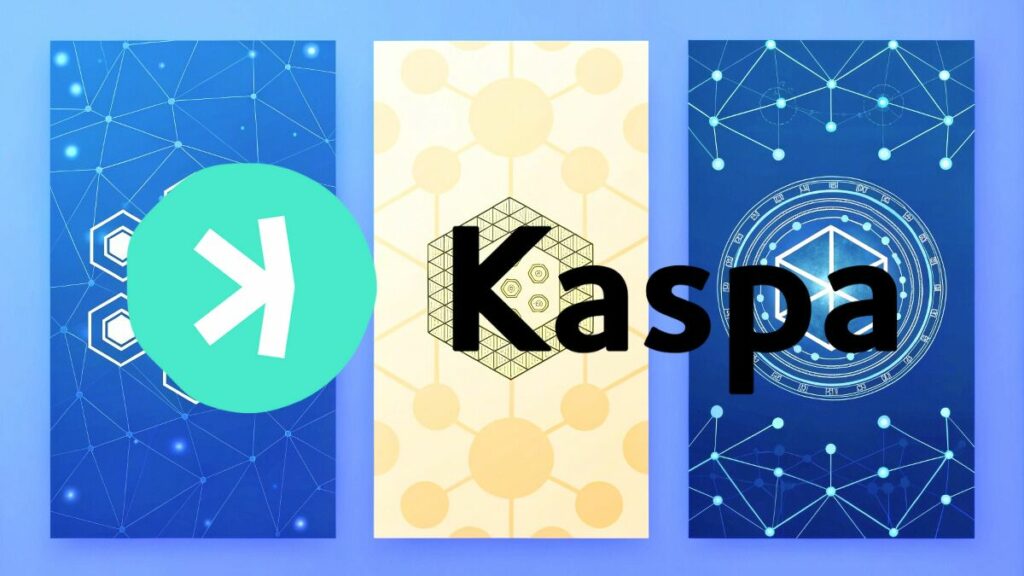Kaspa Network is a next-generation blockchain platform tackling scalability and speed barriers through its unique blockDAG architecture. By enabling parallel block processing, Kaspa achieves high throughput without compromising decentralization, positioning itself as a solution for real-world applications.
What is Kaspa Network?

Kaspa Crypto is a decentralized, open-source blockchain platform designed to address scalability and speed limitations common in traditional blockchain networks. Unlike conventional blockchains that rely on linear blocks, Kaspa uses a unique blockDAG (Directed Acyclic Graph) structure.
This architecture enables parallel processing of blocks, significantly increasing transaction throughput while maintaining security. What is Kaspa Crypto’s ultimate goal? It aims to create a scalable ecosystem capable of handling real-world applications without compromising decentralization.
How Does Kaspa Crypto Achieve High Performance?
Kaspa’s innovative GHOSTDAG protocol ensures fast confirmation times and high transaction speeds by allowing multiple blocks to coexist and be validated simultaneously. This approach eliminates bottlenecks seen in linear chains, enabling Kaspa to process dozens of blocks per second.
Additionally, its proof-of-work (PoW) consensus mechanism is energy-efficient compared to traditional PoW systems, balancing security with sustainability. What is Kaspa Crypto’s edge here? Its ability to maintain low fees and near-instant settlements even as the network grows.
The Potential of Kaspa Crypto
Kaspa’s scalability solutions position it as a strong contender for applications requiring high-speed transactions, such as micropayments and DeFi. Its native token, KAS, powers the network, incentivizing miners and facilitating transactions.
What is Kaspa Crypto’s long-term vision? To evolve into a foundational layer for next-gen dApps, leveraging its unique architecture to support global adoption. With ongoing development focused on optimizing speed and security, Kaspa Crypto stands out as a promising innovation in blockchain technology.
What is Kaspa Network Used For?

Kaspa Network is used for enabling high-throughput dApps requiring rapid transaction finality. Its scalable architecture supports micropayments, allowing users to send tiny sums efficiently, ideal for content monetization or pay-per-use services. What is Kaspa Network Used For beyond payments? It serves as a foundation for real-time systems like IoT networks, where instant data validation is critical.
Facilitating Cross-Border Transactions
By minimizing latency and fees, Kaspa Network is used for seamless cross-border transfers, offering a faster alternative to traditional financial intermediaries. Its near-instant settlement capability makes it suitable for remittances and global trade settlements.
Powering Decentralized Infrastructure
What is Kaspa Network Used For in decentralized ecosystems? It underpins projects needing scalable consensus, such as DEXs or Oracle networks, where speed and reliability are paramount. Developers leverage Kaspa’s high transaction capacity to build next-gen dApps without compromising performance, positioning it as a versatile backbone for Web3 innovation.
How Does Kaspa Network Work?

Kaspa Network operates on a blockDAG (Directed Acyclic Graph) framework, diverging from traditional linear blockchains by allowing parallel block creation. This structure enables multiple blocks to coexist and reference one another, maximizing throughput while avoiding bottlenecks. Transactions are confirmed asynchronously, ensuring rapid finality without sacrificing decentralization.
Consensus via kHeavyHash and GHOSTDAG
Kaspa uses kHeavyHash, a Proof-of-Work (PoW) algorithm designed to be energy-efficient and resistant to ASICs. Miners validate blocks using this lightweight hashing function, reducing computational overhead.
The GHOSTDAG protocol orders blocks by prioritizing the “heaviest” subgraph to resolve conflicts and establish consensus. This method ensures security while maintaining high transaction speeds of up to 100 blocks per second.
Dynamic Scalability and Emission Model
Kaspa’s parameters adapt dynamically to network demand. Its block rate adjusts based on node performance, balancing speed, and stability. The native token, KAS, follows a halving-style emission schedule, with block rewards decreasing monthly rather than yearly.
This gradual reduction aims to stabilize supply while incentivizing miners long-term. Additionally, Kaspa’s SPV (Simplified Payment Verification) support allows lightweight nodes to verify transactions efficiently, enhancing accessibility. By combining these innovations, Kaspa achieves scalability, speed, and security in a decentralized ecosystem.
What is the KAS Token?

The KAS token is the native cryptocurrency of the Kaspa Network, enabling fast, low-cost transactions and rewarding miners for securing the blockchain. With a fixed supply capped at 28.7 billion coins, KAS combines scarcity with a deflationary emission model, where block rewards decrease monthly to stabilize long-term value.
Decentralized Fair Launch
KAS was introduced without pre-mining or reserved allocations, ensuring equitable distribution. Its open-access mining model allows participants to earn tokens through computational work, aligning incentives across the network while maintaining decentralization.
KAS as a Value Ecosystem
Beyond transactional use, KAS acts as a store of value due to its predictable supply curve and resistance to inflation. The token’s integration into Kaspa’s high-throughput infrastructure positions it as a cornerstone for scalable blockchain applications, incentivizing network security and participation.
Is the KAS Token a Good Investment?
The KAS token’s potential hinges on Kaspa Network’s adoption and its ability to solve blockchain scalability challenges. With a fixed supply and deflationary emission, KAS may appeal to investors seeking assets resistant to inflation.
Its use in high-speed transactions and dApps could drive demand if Kaspa gains traction in sectors like DeFi or IoT. However, like all cryptocurrencies, KAS carries risks, including market volatility and competition from other scalable blockchains. Evaluating Kaspa’s technical execution, ecosystem growth, and market trends is critical before considering KAS as an investment.
What is Kaspa Network Mining?

What is Kaspa Network Mining? It’s the decentralized process of securing the network by validating transactions using Kaspa’s lightweight kHeavyHash algorithm, where miners earn KAS tokens for appending blocks through computational effort.
Mining Mechanics and Incentives
What is Kaspa Network Mining’s distinctive feature? A monthly-reducing block reward model through a unique emission curve encourages early engagement while curbing inflation. Rapid block rates and ASIC-resistant mechanics ensure fair, frequent payouts, fostering a decentralized miner ecosystem.
Sustainable Participation
What is Kaspa Network Mining’s ecological advantage? By prioritizing energy efficiency, lowers operational costs and environmental impact, enabling miners to sustainably uphold Kaspa’s high-performance, scalable network infrastructure globally.
Conclusion
Kaspa Network’s blend of speed, scalability, and security positions it as a transformative force in blockchain technology. With its adaptable infrastructure and sustainable token model, Kaspa is poised to support diverse applications, from finance to IoT. As the ecosystem evolves, its success will depend on adoption and continuous technological refinement.










